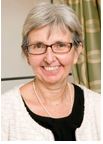Recognising the need for end of life directions in aged care
A blog post written by Professor Jennifer Tieman, CareSearch Director, Discipline Palliative and Supportive Services, Flinders University
Australia enjoys one of the highest life expectancies of any country in the world. In 2016, about 3.7 million Australians (15% of the population) were classified as ‘older Australians’, (aged over 65 in the general population or over 50 for Indigenous Australians), and by 2056, this number is expected to rise to 8.7 million (22% of the population). Within the next quarter of a century, as the number of older Australians grows, the number of Australians who die each year will almost double. This means that we need to be ready to provide care for older people as they come to the end of their life.
Ageing of the population and the impact of progressive advancing chronic disease is increasing the demand for palliative care. The World Health Assembly Resolution in 2014 called for strengthening of palliative care as a component of comprehensive care throughout the life course. The resolution argued for the need to integrate evidence-based, cost-effective and equitable palliative care services in the continuum of care, across all levels, with emphasis on primary care, community and home-based care, and universal coverage schemes. Population ageing and the impact of progressive advancing chronic disease is already increasing the demand for palliative care in Australia. To ensure that older people receive appropriate care we need to understand their wishes and preferences and we need to be able to provide palliative care through the systems currently providing support and care to older Australians. Aged care and primary care are therefore natural partners in ensuring that older Australians receive palliative care at the end of their lives.
Today, Australia’s aged care workforce is significant, with more than 366,000 workers of which more than 240,000 have direct care roles. Enrolled nurses and careworkers provide most direct care to older people. By 2050, it has been estimated that the aged care workforce will need to grow from around 366,000 to 980,000 to meet the aged care needs of the increasing number of older Australians. Medicare claims for unreferred GP attendances for people aged 65 and over show that care for older Australians is a large and increasing focus of GP care provision.
Older Australians demonstrate the diversity of the whole Australian population. Around 20% of older Australians have culturally and linguistically diverse backgrounds and many of the aged care workforce also have a CALD background. People from culturally and linguistically diverse (CALD) backgrounds are one of nine groups of “people with special needs” described by the Aged Care Act. The other groups are people from Aboriginal and Torres Strait Islander communities, people who live in rural or remote areas, people who are financially or socially disadvantaged, veterans, people who are homeless or at risk of becoming homeless, care‑leavers, parents separated from their children by forced adoption or removal, and lesbian, gay, bisexual, transgender and intersex (LGBTI) people.
The End of Life Directions for Aged Care (ELDAC) project aims to provide a direct pathway for those working in the aged care industry and in primary care to find meaningful and practical materials they can use when providing care to older Australians. These resources focus on palliative care and advance care planning.
The project has a number of diverse streams of work. ELDAC has established advisory services for the aged care workforce and for GPs who provide care for older Australians including the ELDAC Helpline (1800 870 155) and has released five online toolkits to support a structured approach to care provision. The project is also developing technology solutions to support care delivery and care processes. A series of policy roundtables to inform decision-makers about key policy and planning issues in palliative care and advance care planning in aged care are underway. The final stream of work focuses on working with a number of local/regional service partnerships to build local and regional capacity for improving palliative care for older people.
Find out more about ELDAC at www.eldac.com.au.

Dr Jennifer Tieman, CareSearch Director, Discipline Palliative and Supportive Services, Flinders University